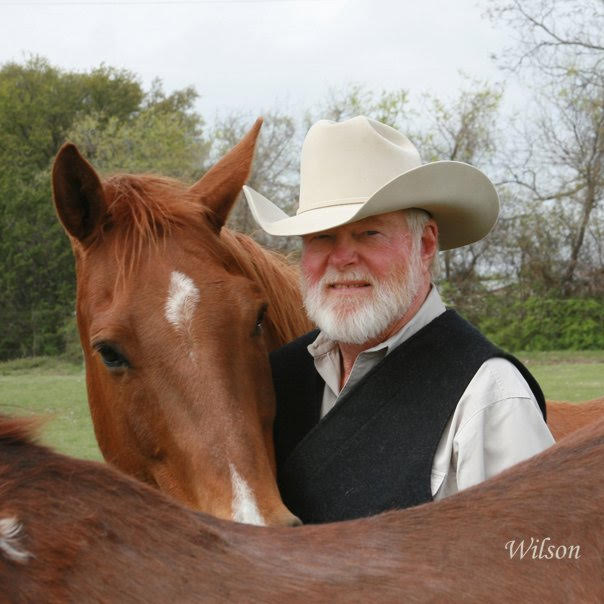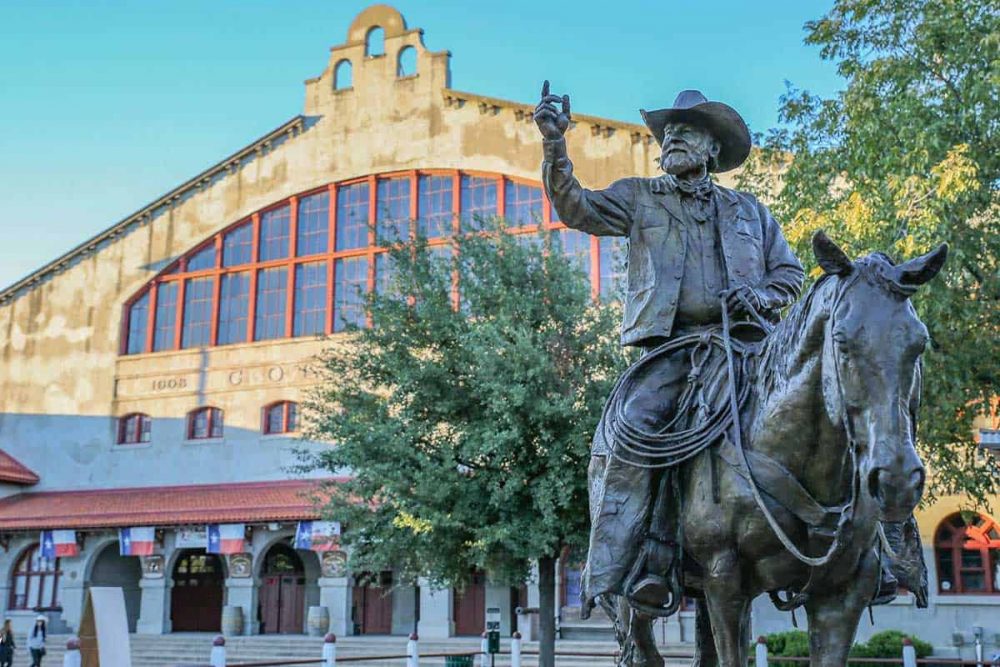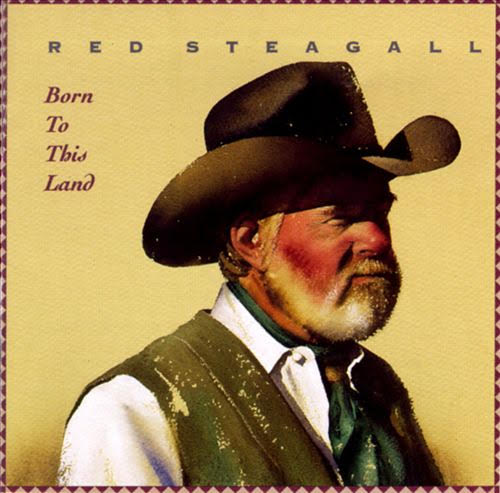Red Steagall’s long-running radio show “Cowboy Corner” is a Saturday morning feature on KSST Sulphur Springs. His stories, poems and songs have entertained listeners and made him ‘like a member of the family” to many local households. During December 2020, 80-year-old Red fell victim to COVID-19, and especially during Christmas week was struggling to recover. Through Facebook, we discovered his plight, and as prayers went out, we felt that the KSST family of listeners world-wide might like to know more about this native Texan and his rise to popularity in the Western genre. If you are already a friend of Red’s, you know he has been disappointed but never defeated. Please read more here about the personal journey of this extraordinary entertainer.

The entertainment career of Red Steagall has covered a period of over 45 years and has spanned the globe from Australia to the Middle East, to South America and to the Far East. He has performed for heads of state including a special party for President Reagan at the White House in l983, plus three overseas tours to the Middle East, the Far East, Europe, Australia, and South America. As a native Texan, Red Steagall enjoyed a career in Agricultural Chemistry after graduating from West Texas A&M University with a degree in Animal Science and Agronomy. He then spent eight years as a music industry executive in Hollywood, California and has spent the last thirty-seven years as a recording artist, songwriter, and television and motion picture personality. He currently ranches outside of Fort Worth, Texas where in addition to his entertainment activities; he is involved in numerous horse related activities.
Born in 1938 in Gainesville, Texas, which today is rich horse country, Russell Don Steagall sought the cowboy lifestyle and took up riding bulls as a young teen. Plans for his immediate future were derailed when in September 1964, at age 15. he was stricken with the polio virus. On the day of the first football game of his junior year at Phillips High School, Red wasn’t on the field. He was in the hospital. His parents had divorced earlier that summer, leaving Red’s mother Ruth with five children and one on the way. One night, Red had fever, chills and excruciating pain in his head. At the hospital, he was diagnosed with polio. Almost immediately the virus drastically affected the muscles in his left arm and he was told that the disease would spread to his left leg. Four days after the diagnosis, Ruth gave birth to Red’s youngest brother, and without his mother near, he felt particularly alone. Because no private bed was available for Red in the hospital, he was placed on a bed in a large ward where iron lungs lined the walls. These machines were pumping breath into polio victims with paralyzed chest muscles. Like embryos in metal wombs, they struggled to breathe, and the haunting sound of their breathing and the pumping sound of the iron cylinders have stayed with Red to this day. That night in the hospital ward, Red made a promise to God. “If you let me live through this,” he said, “I’ll never complain about anything for the rest of my life.”
When Red got home with his limp arm, two things happened. The coaches put him in the whirlpool at the field house every day and his mother bought him a $10 used mandolin. After his daily whirlpool treatments, Red would ride his bicycle four miles to take mandolin lessons, concentrating on one finger at a time to rebuild strength in his hand. When he could play a two- or three-finger chord, his mother helped him buy a guitar as a graduation present. That year, the Phillips High School Blackhawks went on to win the state championship without Red on the team. Since he couldn’t play football anymore, he also had to give up his college scholarship to Texas A and M, and thus, he was not on the team when “The Junction Boys” under coach Bear Bryant won the Southwest Conference and produced a Heisman Trophy winner during the years when Red would have been a Texas Aggie. Yet, living with his polio diagnosis, he may have been disappointed but never hopeless. He realized his dreams had to change but doesn’t remember ever thinking, “Why did that thing happen to me?” Instead, he remembers thinking, “Well, that happened to me. Now I’ve gotta do somethin’ about it.” Red saw that he was no longer like everybody else. He couldn’t play football. He couldn’t pole vault. He couldn’t do the things he had most enjoyed, but he could still have a good life. And he could still ride bulls if he tied his left arm to his body to keep from being disqualified for touching the bull!
Thankfully, the debilitating disease never spread to his leg. Maybe it was all the hours in the whirlpool and all the hours riding his bicycle to mandolin lessons. Like many, Russell Don Steagall didn’t get to choose his circumstances. During the defining years of his life, he could only choose his response. What he did was make a career out of throwing his limp left arm onto the neck of his guitar and grasping the strings with his fingers. Today the original second-hand mandolin that helped make all this possible is on exhibit at the High Plains Western Heritage Center in Spearfish, S.D. Red loaned it to the museum when they honored him as Cowboy Poet of the Year. And that is only one of the many honors, accolades and opportunities which has blessed Red’s life as an entertainer in the Western genre.

“My mother made me believe. I learned to adapt, and I think that’s the greatest lesson I got from polio,” Red said. “Nothing really scares me because I know there’s a way around it. Mother wanted me to do whatever I wanted to do, and she made me believe I could. She made me believe that I was exceptional and that I had certain talents that nobody else had. She taught all of us that all of our lives…. There’s one thing I still do to this day. If I’m going to make a decision, I think, ‘What would Mother think about that?’” During his second year at what was then West Texas State University in Canyon, Red realized that being a large-animal vet with only one arm would probably mean getting himself hurt or somebody killed, and earned a degree in animal science. To finance college studies, he played local dances and clubs with the guitar his mother helped him buy for graduation. His first hit song was written when his roomate and songwriting partner Don Lanier picked out a new melody for Red on guitar, as he often did. Within minutes the two roommates had the words to that melody in Donnie’s head and “Here We Go Again” was born. That song ‘Here We Go Again’ was Red’s biggest commercial success as a songwriter. After the Ray Charles hit record in 1967, Nancy Sinatra recorded a single of the song and made the Top 40. Dean Martin made a single the next year and got in the Top 10. Then Glen Campbell released it in an album, and the song snowballed, taking on a life of its own. “Here We Go Again” has been recorded 63 times.
Steagall was signed to Dot Records in 1968, but moved over to Capitol, where he had his first country hit, “Party Dolls and Wine”. Soon after, he had a Top 20 country hit with “Somewhere My Love.” He moved to Nashville in 1973 and followed up with two more hits, “True Love” and “If You’ve Got the Time.” Steagall became a regular guest at rodeos, and while he was performing at the National Rodeo Finals in Oklahoma City in 1974, he spotted a young singer named Reba McEntire who was appearing with her family. He got her to record a demo and made sure that it was heard by anyone who could do McEntire some good. That resulted in her being signed to a recording contract while still in her teens.“I thought she had the purest voice I’d ever heard,” Red said. “She had total control and emotion that was raw. She was 19 years old and hadn’t been influenced by anything except herself.”
Steagall ‘s recording career continued, including a Top 15 single with “Lone Star Beer and Bob Wills Music” in 1976. His recording of “I Left My Heart in San Francisco” made the charts and in the late ’70s, he began moving toward Western music as much as country. In 1979, and in 1980, he decided to leave Nashville and along with his wife Gail, took up residence at his ranch near Fort Worth. Steagall had made numerous appearances on syndicated television shows such as Hee Haw and Nashville on the Road, spent four years as host of the nationally televised National Finals Rodeo, was host of the Winston Pro Tour on ESPN for the 1985 season, and co-hosted the College National Finals Rodeo for the Freedom Sports Network from 1988 through 1991. He was also the host of Western Theater on America One Television. Steagall had a major role in the motion picture Benji the Hunted, which was released in the summer of 1987. He also appeared in the motion pictures Dark Before Dawn and Abilene. He produced the motion picture Big Bad John, starring Jimmy Dean, Jack Elam, Ned Beatty, and Bo Hopkins, and directed by Burt Kennedy. Steagall is a trustee of the Pro Rodeo Hall of Champions, honorary member of the Cowboy Artists of America, and former board chairman of the Academy of Country Music. Today, his most recognizable role is as America’s premiere Western historian. Steagall currently hosts a one-hour syndicated radio show, Cowboy Corner, on 170 stations in 43 states. Cowboy Corner celebrates the lifestyle of the American West through the poems, songs, and stories of the American cowboy. In 2010, In the Bunkhouse with Red Steagall began airing on the RFD-TV network; as of 2017, Steagall now hosts Red Steagall is Somewhere West of Wall Street for the same channel. His down-home, friendly manner and considerable musical talents make him a favorite of rural America.

Red’s accomplishments in Western literature are perhaps his most beloved legacy. 1991, the Texas legislature voted Steagall the Official Cowboy Poet of Texas. Soon after, he began recording for the Warner Western imprint, issuing Born to This Land in 1993. Steagall released Faith and Values in 1995, Dear Mama, I’m a Cowboy in 1997, and Love of the West in 1999. Wagon Tracks appeared in 2002 from Shanachie Records, followed by The Wind the Wire and the Rail from Wildcatter Records in 2006.





